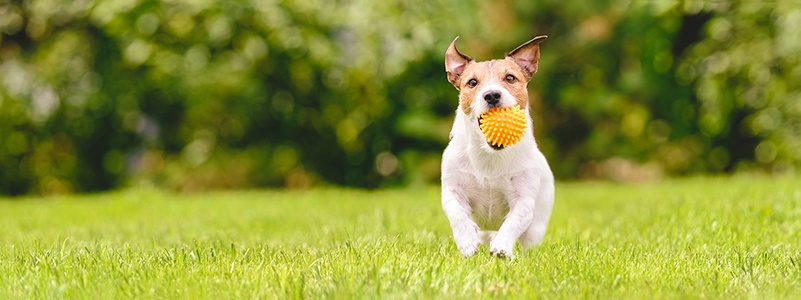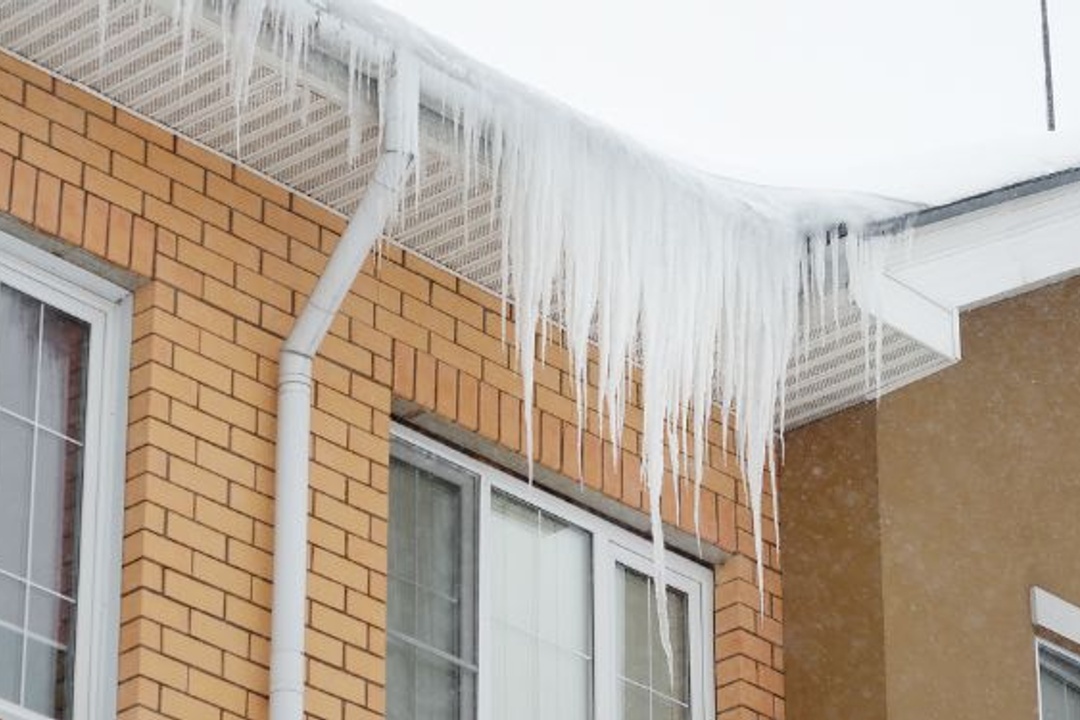
If this past year has taught us anything, we’ve learned that the great outdoors are crucial for peace of mind and relaxation. Especially for our furry friends, who can easily get bored being indoors for too long. But when you do allow dogs to roam outside, there are safety measures that should be taken to prevent them from escaping your yard.
Even if you’ve got a fence surrounding your house, dogs who are part-time escape artists will find a way to break out of your yard. So what can you do as a responsible dog owner to prevent your best friend from running off? Check out these tips!

Reasons a Dog Might Try to Escape the Yard
You could have the best outdoor setup for your dog, complete with a white picket fence and plenty of room to roam and sniff every last patch of grass. But wouldn’t you know it, they will still try to escape in any way they can. Don’t worry, the problem is most likely not you, but this urge to run off is hard-wired into your dog’s brain. So what are the main reasons that can cause your dog to attempt to leave the yard?
Mating
If your male dog isn’t neutered, he’s going to be looking for potential mates on the other side of the fence. Or at least beyond your yard. Even if you live in the middle of nowhere, there’s still a possibility that a stray dog may come along and entice your unneutered dog to run off.
Don’t think your female dog is in better shape if she’s unspayed. She may not go as far to make a break for it outside of your yard but if stray unneutered dogs get her scent, they’re going to be hanging around your place.
It’s important to spay and neuter your dog to prevent these scenarios. For one thing, it will prevent your dog from escaping the yard and keep unneutered dogs moving along. These measures also prevent your dog from impregnating or becoming impregnated.
Pet overpopulation is a major killer of animals in the United States. In fact, 3-4 million dogs and cats are euthanized every year and roughly 150,000 end up in animal shelters.
To prevent your dog’s offspring from becoming another statistic, be sure to spay and neuter.

Fear
Another factor that can cause your dog to make a mad dash is fear. That’s right, fear can make your dog run away from your yard instead of towards you for safety. But what makes a scared dog run away from your home? Usually it’s thunderstorms, fireworks, or even people that your dog doesn’t recognize.
If your dog appears uncomfortable in its body language by shaking, cowering, or moving slowly, this is a sign that they’re feeling stressed or scared. Other signs of fear in dogs include frequent yawning or panting, licking their lips or nose, moving quickly or darting away, or pacing around.
When your dog’s body language seems off, investigate what factors could be causing the fearful behavior. If you find the root of the issue, be cautious with your dog and try to carefully move them away from what is scaring them.
Doggie Doors Offer a Safe Space
A great solution to give a scared or shy dog is the option of a doggie door. If they’re not comfortable being outside due to loud noises or bad weather, they’re free to come inside whenever they’d like. Same goes if they’re inside and become uncomfortable from unfamiliar people or sounds — they can simply escape and have their own space outdoors.

Boredom
Dogs are naturally adventurous, which is great for your weekly hikes, but not so much when you’re trying to keep your dog in the yard. Especially if you have neighbors that may distract your dog and give them the urge to investigate due to boredom.
Because dogs are social creatures just like us, they can benefit from having a friend to keep them company (and keep them from running off). But if getting another dog isn’t an option at the moment, you can keep your dog engaged with interactive toys.

Preventing Escape from the Yard
Just like your best friend’s toddler, dogs are elusive escape artists. They can disappear within seconds of turning your back, never to be seen until your frantic search begins. So what can you do to prevent your dog from running away from your yard? Find your dog’s escape artist strategy and get the solution below.

The Hop-Over
When you have a fence in your yard, you might think it’s high enough to prevent your dog from hopping over. But you’d be surprised how high some dogs can jump. Oh, and dogs can be pretty good climbers, too. So this is definitely something that requires your attention.
The main fix you can do is cover the inside facing of the fence with a smooth surface like plywood. This will make the fence too smooth and slick to jump and climb over, so it’s your best bet to keep your dog in the yard.

The Tunnel Digger
Now that you’ve got your fence taken care of, that should be all set...right? Not quite. Your dog might just take the digging out route and try to go underneath the fence. So how do you fix this problem? There’s two great solutions.
You can bury chicken wire underneath the fence. This wire won’t harm your dog if they attempt to dig, as well as keep them inside the fence.
The second solution is placing large rocks along the bottom of the fence. Just make sure that your dog isn’t strong enough to push them aside. You wouldn’t want to carefully place the rocks just to have your dog escape anyway.

The Escape Artist
The issue with a lot of fences is that there are too many gaps in the fence itself, or the fence doesn’t quite reach the ground. This gap at the bottom of the fence means that not only will small animals be able to crawl through, but your dog could easily squeeze underneath or dig a hole deep enough to fit through and escape.
To prevent this from happening, be sure to fill in any gaps in your fence. Or you may have to purchase and install a new fence that is much more closed in. It may be a cost to your wallet and free time, but it’ll be worth it when you don’t have to go looking for your lost dog.

The Locksmith
Once your fence is repaired or replaced, the last crucial step is checking the gate lock. Don’t totally rely on the built-in latch: it may not be secure enough for dogs who can figure out how to flip it open. If a stronger lock is needed to keep your dog inside, that will be another purchase that is well worth it. You could even opt for a self-closing gate to ensure more security for your dog’s well being.
The dog may want to run off, but there are significant dangers for your dog when it’s out on its own. It could come into contact with wild animals, or even other dogs, that may become aggressive. Not to mention cars and other vehicles that may hit your dog if it gets out on the road.

Pet-Proofing Inside the Yard
Outside of the fence isn’t the only place that presents danger to your dog. Surprisingly, the area within your fence can also cause potential harm. But how? Factors like harmful plants, insects, and other wildlife could be a threat to your dog’s well-being.
Watch for Harmful Plants
Not all plants are safe for your dog to be around and potentially ingest. Dogs are curious creatures and will sniff every last plant they see, so what can be done to prevent a harmful ingestion that could result in sickness or even death?
The first step is to recognize which common plants are harmful to dogs. These plants include:
* Castor bean
* Daffodils
* English Ivy
* Lilies
* Morning Glory
* Tulips
* Azaleas
* Elephant Ears
* Dumb Cane
* Black Walnuts
* Sago Palm
Once identified, these plants should be removed from your yard and home if you keep any of these as indoor plants. Some of these plants are especially lethal to dogs, including Castor Bean, Azaleas, and Sago Palm.
The best prevention is to remove these plants immediately to keep your dog safe within your yard.
If you care for plants that are safe for your dog, even some soil or mulch can be dangerous for them. Avoid cocoa bean mulch, as it can be toxic for dogs.

Eliminate Fleas and Ticks
Another potential danger is disease-causing fleas and ticks lurking in the grass. Plus, these insects can find their way inside your home once they latch onto your dog. The process of getting rid of fleas and ticks can be costly, so it’s important to keep up your yard.
Keep the grass in your yard trimmed regularly, just enough so it’s not too long. You can also use non-toxic repellents to keep the insects at bay as well.
Be Careful of Snakes
If you live in an area with venomous snakes, you need to make sure that your dog is safe from this potential predator. Even if you just spot a small garden snake once in a while, you should still remain cautious. So while you’re at it mowing your lawn, be sure to also keep your lawn clear of debris. So rake loose grass and leaves, as well as clean up any clutter like firewood.

Making Your Backyard Fun for Fido
Once you eliminate the major obstacles, how do you make the perfect backyard for your furry friend? When your dog has a comfortable and enjoyable environment, this will cut their urge to run away.
Make Their Shelter a Cool Hangout
Dogs can get bored in a limited amount of space. Especially if they have nothing to engage with, like a dog friend or toys. But being outside, they also need protection from sun exposure. Yes, dogs can get sunburned like humans and it’s not fun for them, either.
But you can solve two problems with one solution by providing your dog with a shelter. You could build a simple shelter yourself or buy a doghouse that will provide the perfect amount of space depending on the size of your dog.
To build a shelter, you can get tons of instruction and design inspiration online. However, first consider the amount of space needed for a shelter in your yard and where you will place the completed shelter.
Think about the common weather forecast year round: do you get a lot of rain in the spring? Do you live in an area that gets heavy snowfall every winter? Are the summers extremely hot?
Consider these factors and appropriately weather-proof your dog’s new hangout spot. Buy the needed materials and follow the instructions to ensure your dog the best shelter you can create.
When completed, place a dog bed inside for comfort and add toys to keep your dog entertained.

Add Texture and Depth
There can be more to a backyard than fresh cut grass and a shrub here and there. Especially for a dog, a bare backyard gets dull fast. So what more can you add to spice the place up and keep your dog well-entertained all day?
Adding some outdoor plants that are safe for dogs can be added to create more texture in the backyard. Speaking of said shrubs, make sure to do research to ensure that a certain plant is non-toxic for dogs before you put it in your yard. But you can create a fun environment with thick, dog-safe shrubs lining the fence or place them to add some outdoor decor to your dog’s shelter.
Here are examples of dog-safe shrubs:
* Tropical Hibiscus
* Crepe Myrtle
* Magnolia Bush
* Figleaf Palm
* Bamboo Palm
* Oregon Grape
* Golden Bells
* Boston Fern
Now that you’re mapping out the perfect jungle-inspired backyard for your dog to have endless adventures in, let’s find out how to add some more depth. One great way is to add lawn decorations such as small statues. And no, you aren’t limited to only garden gnomes.
Check out your local second-hand shop to find unique pieces to the yard. Bring your dog with you to pick out more decorations: this will become their yard, after all!
When shopping for small statues and other decorations, make sure that your dog won't be able to push it over. The last thing you want is your dog to get harmed by accident, so also be aware of any pointed ends or small detachable parts that could pose a danger.

Create a Private Potty Spot
The best way to keep your yard clean is to potty train your dog to go in the same spot every time. That way, you won’t have to hunt for messes throughout the backyard. Or you could DIY a potty box for your dog to do their business on. This method is affordable and effective at protecting the cleanliness of your yard.
Train Your Dog With a DIY Obstacle Course
A backyard is the perfect spot to teach your dog some new tricks! But if your dog is past “shake” and “play dead,” it’s time to incorporate a mini obstacle course.
You can create easy weave poles with PVC pipes or bamboo poles. This is the easiest DIY obstacle course: simply hammer the poles securely into the ground. Then you’re ready to test your dog’s agility as they weave through the poles.
Got PVC pipes? Create some quick and easy jumping hurdles to flex your dog’s jumping abilities. Simply attach the PVC pipes into a makeshift hurdle. Grab some treats and run alongside your dog and teach them how to jump!

Recreate the Playground
Think back to your school yard days. What did you enjoy doing outside on the playground?
Inspired by the classic game of tetherball, create an easy dog-friendly version called a tether pull. Find a long, sturdy pole made of metal or wood. Then drill a hole through the top and pull a thick durable rope through and knot it at the top to secure it. Tie one of your dog’s toys at the bottom of the rope and watch them enjoy themselves.
Remember kickball? All you need to keep a dog happy at the very least is to kick around a big, bouncy ball or soccer ball. But feel free to make two goals with PVC pipes and play one-on-one soccer with your dog!
Add a Sandbox or Digging Pit
Does your dog still try to dig up your yard despite your best efforts to stop them? Then set up a sandbox or a digging pit. These are affordable and easy to DIY, plus tons of fun for your dog! A sandbox is an excellent choice for smaller dogs or puppies. You can buy a children’s sandbox or create your own in the same method used for the digging pit.
All you need to do is follow instructions to make a simple sandbox. Grab enough wood to create an octagon, square, or rectangle shape for the digging pit. Dig around the perimeter and fit the boards into the ground. Board those up with a hammer and nails and dig out the inside. Then fill the middle with play sand, dirt, or even a big patch of grass.

Pet-Proofing for Puppies
Now that you’ve got the dogs all set in your yard, what about puppies? These growing doggos need a lot more attendance and care, especially in a backyard. In addition to the advice for adult dogs, there’s some extra tips to consider when it comes to fixing up your yard for a puppy.
Clean Up Any Debris
You might be able to trust a fully grown dog not to eat trash or other debris lying around, but puppies are more curious about the world around them. Depending on what they put in their mouth, they can become ill or start choking. So be more aware of what is in your backyard by cleaning up any trash or debris before letting your puppy go outside.
Pick Up Broken Toys
We all know that heartbreaking look of puppy dog eyes staring back at us when our fur babies want something. But if it’s a broken or damaged toy, it’s better off in the trash.
Toys that have been chewed up beyond recognition can become a choking hazard for puppies. Throwing the toy away and replacing it with a safer toy is the better option for their health. Have another toy ready to give your puppy when you must throw out their broken ones. Those sad puppy dog eyes will recover soon after.

Put Away Any Garden Tools
You shouldn’t leave gardening tools (or any other tools) unattended around dogs, but puppies aren’t super aware of their surroundings yet. So if you’re outside gardening while supervising your puppy, just be cautious about where you put your gardening tools. For any sharp tools, put them away in a toolbox.
Build a Shelter
Just like for adult dogs, puppies should also have a shelter of their own to escape sun exposure and other weather conditions. But their shelter may need to be cleaned up more often, as puppies are still grasping the idea of going potty in the same spot. So while you are teaching your puppy to go in the digging pit, clean out their shelter every so often to make sure it's sanitary. Check for fleas and ticks on your puppy to avoid possible illnesses from these disease-carrying bugs.
Supervise at All Times
This has been mentioned in the above points, but it’s such an important reminder to supervise your puppy at all times while outside. If you’re absent from view, your puppy may get hurt or need help and you may not even know it right away. You don’t have to hover over them every second, but at least be in the same vicinity. If your puppy is outside, then you must be outside watching them.
The great outdoors are where dogs thrive, but sometimes a hiking trek doesn’t fit into your schedule. That’s why setting up a dog-safe, but adventurous backyard is crucial to keep your energetic pet busy during the day.
Plus, who wouldn’t want to spend time with their dog or puppy outside in a sweet setup full of luscious plant life and cool toys? So, follow these tips to ensure the best backyard for your dog. Want more DIY ideas for your yard or home? Check out these other great posts from HomeCity!










